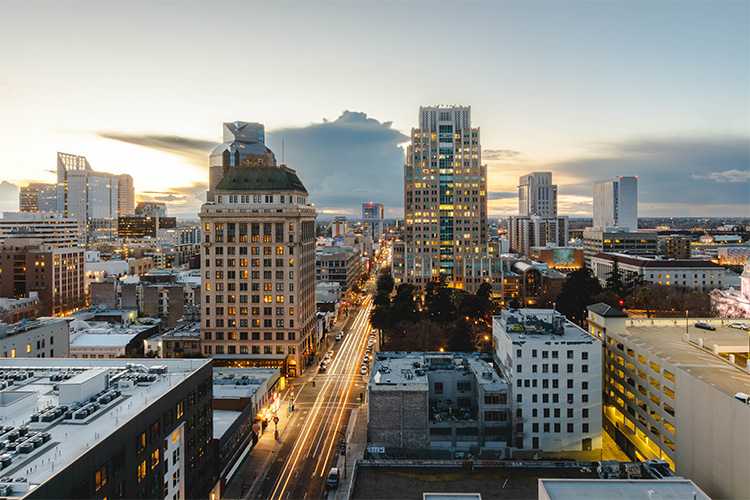Creating a Downtown Worth Living In

Downtown has gone through a cultural reset. What was, for a long time, a one-dimensional office center has gone back to its roots as a place where culture, commerce, and community collide.
It’s clear now that what downtown needs is residents, a built-in community that’s invested in the health of the neighborhood they live in. We haven’t figured out the best way to achieve creating that built-in community. So today, that’s what we’re doing.
We’re releasing the Downtown Sacramento Livability Strategy to fundamentally change our approach to downtown’s growth by prioritizing the things that any great neighborhood needs.
A New Era of Housing
Obviously, we can’t create a neighborhood without more housing and more access to housing. Downtown is no stranger to luxury apartments, but we need all affordability levels of housing to be made available so low, middle, and high-income Sacramentan’s can call downtown “home.” While we’re at it, let’s remove barriers to create the opportunity for apartment ownership, so we don’t have to run off to the suburbs to own our own homes.
California may not have a “housing crisis” as much as it has a housing policy crisis, and we need to act now to fix it. More housing with more residents means more eyes on the street, more customers for local businesses, and more people invested in the health of downtown.
Rethinking Our Streets as People-Places
Our streets are the primary public space downtown. But they were built with cars in mind, not people. Let’s reconsider how we use and design our streets and sidewalks. Where can we reclaim a traffic lane and on-street parking to use as al-fresco dining? What streets could we close to cars altogether to create a pedestrian hub for shopping and dining?
Safety and comfort for pedestrians and bikers is going to get us a lot farther than making sure people can zip out of downtown as fast as possible. You might be thinking “Where will I park my car?!” To that I say: Nowhere! That’s the point! Just kidding — we of course need parking. But it shouldn’t be our top priority. We need to get the toxic relationship Californian’s have with our cars in check.
Transportation That Works for Everyone
On that note, let’s get into public transit. My favorite line from the strategy is “A downtown where everyone has come from somewhere else is fundamentally limited by how easily people from elsewhere can get there.” We need infrastructure that supports traveling by foot, bike, or public transit. A great example is the Central City Mobility Project, being implemented by the city right now.
The more people who come by public transit, biking, walking, etc., the lower public infrastructure costs for transportation (that we all pay) will be, the lower climate change-related emissions and health-affecting pollution will be, and the better our physical activity-related public health could be. Once we re-center people, we can transform car-related spaces into the kind of uses and amenities that would support a livable downtown neighborhood.
Of course, we will always have people coming downtown from elsewhere for work, entertainment, tourism, etc. But one of the biggest advantages of building more housing in and around downtown is that it creates a population who are already here, or within a walkable/accessible distance, and don’t need to drive and park and deal with car-centric hassles.
Everyday Essentials, Close to Home
One of the biggest challenges for downtown living is access to everyday essentials. The strategy addresses this by pushing for the development of key amenities like a full-service grocery store — something that’s been sorely missing. With these essentials in place, downtown could truly become a neighborhood where everything you need is within arm’s reach.
It’s the classic chicken-and-egg situation. It’s hard to get a vital amenity like a grocery store without loads of residents to support it, and housing development can be a hard sell without said vital amenities. But supporting downtown with people-centric streets/places and making a grid that everyone can get to, and get around in, sets both the chicken and the egg up for success.
Well-Behaved Cities Seldom Make History
A lot of the ideas in the Livability Strategy are ambitious. Some may say scary, even. But growth happens when we step out of our comfort zones and go against the status-quo.
The strategy’s closing statements say it better than I ever could: “Shelves are full of strategies crammed with good ideas that are only succeeding at collecting dust. Strategies like this succeed if there are passionate people — especially bold leaders — who are inspired by them, and actually work hard to keep them front and center and use them to influence every decision. That’s what this strategy is for. Whether or not it succeeds is in our hands.”
If you’d like to get on board, you can read the Downtown Sacramento Livability Strategy right now — found here. It’s a good read, and it’s not a report full of technical jargon.
“The intent of this strategy is to be a transformational turning point for downtown. Anything less than that should be considered a failure.” Brent Toderian, Livability Strategy Co-Author


